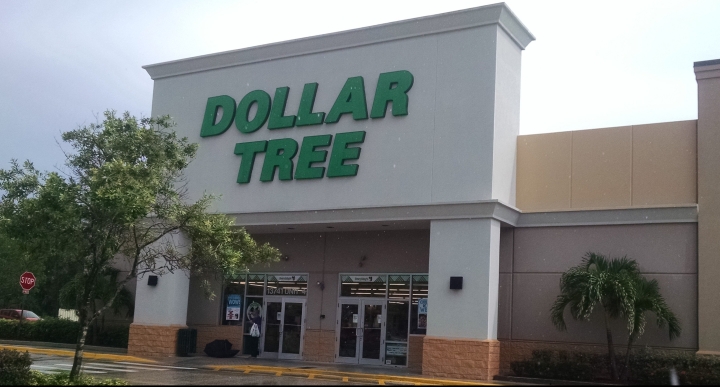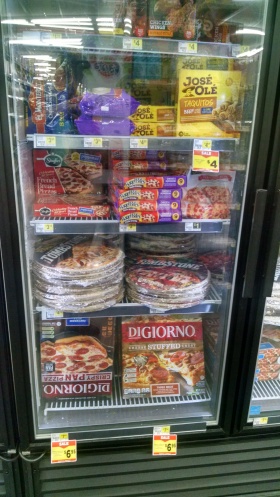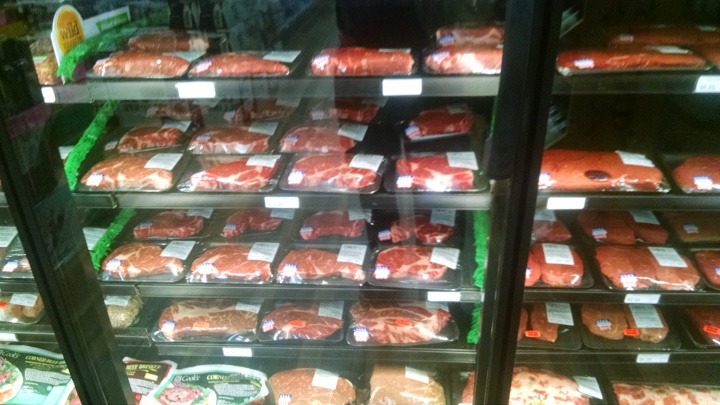
Dollar stores are the trendy topic for those of us interested in reclaiming food deserts by providing greater access to fresh meats, fruits and vegetables. It has been pointed out that convenience stores selling food of questionable nutritional value far outnumber those selling whole foods, but that is not the critical question I am addressing this month. The total amount of food available and volume of sales are much more significant than the number of stores. What is critical is whether a person has ready access to a store that sells fresh food. The authors of Food Justice and Black Food Geographies see access to whole foods as a basic human right. It would seem that a country of our level of wealth should be able to reduce the number of food deserts in both rural and urban areas. A bill to provide incentives to supermarket chains to locate in underserved areas has been introduced in Congress, but it is unlikely to become law. An alternate solution is to create oases in these deserts through dollar stores across the nation, but the idea has been a controversial one.
What are dollar stores and why do they matter? A dollar store generally refers to one of three chains—Dollar General, Dollar Tree or Family Dollar. Generically, these stores are known as variety stores as they offer a wide variety of discounted items generally at or below a dollar or an even multiple of a dollar. My wife likes to shop at these stores for knick-knacks, and I have been known to buy cheap seasonal items or Sunday school supplies at them. We don’t view them as food stores, but this role may be changing.
The reach of dollar stores is why they enter the discussion on food access. It is estimated that the USA has more than 30,000 dollar stores–more stores than McDonald’s and Walmart combined. They are located across the country in both rural and urban areas, both where there is access to fresh, whole foods and where access is either limited or nonexistent. The demographics of their clientele tends to be predominantly low-income families, although bargain hunters with higher incomes have been known to shop at these outlets. It is the combination of their locations and customer demography that have led to the controversy over food access.
The case against dollar stores centers around their strategy of targeting urban areas and small towns leading to the creation of food deserts. The argument claims that supermarket chains are unlikely to locate in areas with a presence of these stores. Critics call dollar stores food swamps pointing out that the food sold is unhealthy, largely consisting of ultra-processed products. These stores do not sell fresh fruits and vegetables. The ability of SNAP (formerly known as food stamps) recipients to purchase food in dollar stores could lead to poor health outcomes for low-income consumers. Some communities are even trying to limit the growth of these stores by not permitting a new dollar store to open up within a mile of an existing one or through other types of zoning regulation.

The case for dollar stores also centers around their reach and customer demographics. They are larger than many corner stores mentioned in the post last week generally with more personnel and a higher turnover of items. Although dollar stores are smaller than supermarkets, they do stock processed food products like canned and frozen foods that are not ultra-processed and are of comparable quality to items found in the supermarket at lower prices. They also sell bacon, eggs, cheese and other refrigerated, perishable foods, but I have not found any fresh meats at those I have visited. While dollar stores may prevent supermarket chains from moving into some neighborhoods, it is unlikely that we will see a massive movement of chain stores into all or even most current food deserts in the foreseeable future.

Leveraging dollar stores to improve food access is a possible solution for providing fresh, whole foods to low-income communities. A proposal was introduced during the Obama administration to require stores that accepted SNAP to stock a certain number of items in each of selected staple categories including perishable items. Opposition mounted from stores, and the initiative seems to have disappeared with a change in administrations. An extensive Healthy Corner Stores Proposal was developed by the Food Policy Council of San Antonio and presented to the City Council. The proposed changes are apparently being phased in slowly through participating stores. The brute-force, top-down, nation-wide approach of the earlier SNAP proposal could backfire. Too stringent requirements for small stores to be able to meet could lead to stores not accepting SNAP benefits and thus denying access to food for low-income families.
In an era where we have too many families located in food deserts, we need to develop ways to increase access to fresh, whole foods. The best alternative is to introduce supermarkets to affected areas, which, in effect, eliminates the desert. In areas where it is highly unlikely that a supermarket can be attracted, efforts like the one in San Antonio could provide oases in these deserts. A survey of small stores in and around San Antonio found that there was a desire by some of their customers to buy healthier foods than those that were available while other customers had no interest in such foods.

It should also be noted that many processed foods, particularly canned goods and low-sugar/low salt frozen foods, can be part of a healthy diet. Even some ultra-processed foods, such as whole-grain breads and breakfast cereals, can be beneficial. The focus should be on providing access to those customers who seek out healthier diets. Education campaigns to encourage people overly reliant on foods that do not constitute a healthy diet to improve their nutritional status should emphasize affordable alternatives. A phased-in approach that is developed in communities to meet specific needs is more likely to be effective than top-down, national action, but it will take much longer to be implemented than by federal mandate. Local governments, food banks and corporate sponsors could come together to enhance the living environment. State and federal governments could provide tax incentives and subsidies for both urban and rural renewal. Such agencies could also provide information about practices working in one for possible adoption in other regions.
Dollar stores appear to be uniquely qualified to help provide oases in food deserts. They have a broad reach across the country and are located in current deserts, many of which are unlikely to attract a supermarket anytime soon. For it to work the following changes would need to happen:
- a concerted effort by corporate management of at least one or more of the Dollar chains;
- a marketing campaign for fresh, whole foods targeting low-income families living in food deserts;
- a distribution scheme that provides delivery of perishable items to participating stores more often than once a week;
- dedicated display areas for fresh meats, fruits and vegetables in those stores;
- trained personnel to manage fresh items, probably for a number of stores located within a designated area; and
- enough customers willing to purchase fresh foods to keep the items affordable and the operation profitable.

Bottom line. I feel strongly that we have obligation to improve access to affordable fresh food, particularly those of us who are now or have been in the past food professionals. I believe that consumers should have the ability to choose the foods they want to buy and eat. I am much more in favor of creating oases in food deserts than attempting to drain food swamps. I also believe in working within the market system through nudges including subsidies and tax breaks from local, state and federal agencies. Finally, I favor tweaking the current food system rather than reimagining and redesigning it. As Daniel Parasecoli so aptly put it in Food:
“Food production is trying to appear less an industrial and mass-oriented outcome of factory labor and more the result of labors of love, more local than global. Consumers’ satisfaction is made to appear a priority for food businesses. However, you only need to scratch the surface to realize that the main goal of food businesses is still profit.” (p 15)
America seems to work best when government sets goals and provides direction while the markets provide the goods. To provide better access to fresh items for those living in food deserts, agencies must set the goals, chains and owners of small stores must accept the challenges, and their customers must purchase enough fresh foods to allow the effort to be profitable.
Next week: Pressure Cooker: Why Home Cooking Won’t Solve Our Problems and What We Can Do About It

Good points, and great analysis. I wonder if some of the grocery stores that have stricter rules on produce quality could help get produce to these Dollar Stores. Obviously those shopping at Dollar Stores deserve “good” produce so I’m thinking NOT the moldy, about to expire produce, rather the perfect-but-misshapen produce. Maybe that solution would help food desserts and food waste?
LikeLike
Interesting comments. First, the Dollar Stores would need to install display areas for fresh fruits and vegetables, and that would need to be initiated at the corporate level. I worked with postharvest handling of fresh produce. I think your suggestion for individual grocery stores/supermarkets to interact directly with individual dollar stores would be difficult logistically. Moving up the supply chain to packing/sorting facilities is more likely. Thanks for the comment and the interest.
LikeLike
My pleasure. And thanks for the additional insight. I enjoy reading your blogs because you have so much experience and knowledge that informs the discussion.
LikeLike
Thanks back. I enjoy following your blog, although I sometimes need more caffeine just to keep up with the amount of material you publish!
LikeLike